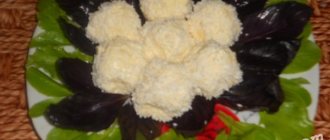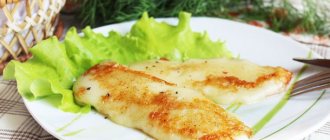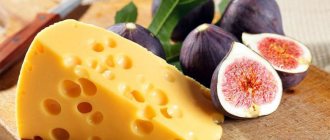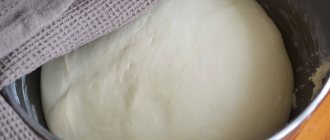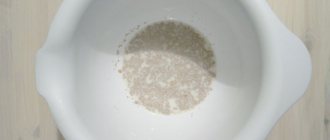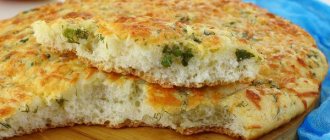How to make Parmesan cheese at home?
Option 1
Ingredients:
4 liters of skim milk (no more than 2.5%), 80 g of thermophilic starter (for example, yogurt), ¼ tsp. rennet enzyme.
Heat the milk to 38 °C, add the starter, stir well and leave for 45 minutes. Dissolve rennet in ½ cup cold water and slowly pour into milk, stirring gently. Stir for about 5 minutes. Let sit for 45-90 minutes until the curds are curdled and ready to cut. Using a long sharp knife, cut the curd mass into cubes with a side of 0.5 cm. Leave the curd for 10 minutes. Slowly heat the curd to 51.5°C for 45 minutes, stirring the curd every few minutes to prevent it from sticking. Leave the curd at this temperature for 15-30 minutes until the particles become small and firm. Drain the whey through a colander covered with gauze.
Carefully transfer the curd into a pressing mold covered with gauze or cloth. Press the cheese under 4.5 kg pressure for 30 minutes. Remove it from the press and turn it over. Press under 12 kg pressure for 12 hours. Remove the cheese from the press and place in an 18% saline solution for 30 hours. Turn the cheese at least three times to ensure the crust forms evenly. Remove it from the solution, dry it and place it on a flat surface to harden the crust.
Place the cheese in a ripening room for at least 5 months. Turn it over every day for the first 2 weeks and then once a week, otherwise it will dry unevenly. Cover the cheese with an inverted bowl after two days. Check the surface of the cheese daily for mold. If it appears, it can be removed with a paper towel soaked in white vinegar. After 3, 6 and 9 months of ripening the cheese, brush it with olive oil. Do not wax.
Option 2
Ingredients:
10 l skim milk, 1 tsp. rennet starter, 2–3 tbsp. l. salt, 1 g saffron, salt.
Heat the milk to 30 °C and pour in the rennet starter diluted in 1 glass of water. Leave in a warm place for 30 minutes to ferment. When the milk sours, stir the resulting curd in the whey, add saffron and heat the mixture to 45–50 °C over low heat, stirring. Separate the resulting curd from the whey - strain through a colander lined with gauze. After about an hour, when the bulk of the whey has drained, place the future cheese in gauze in a mold, and place a small weight on top.
After half an hour, double the load. Withstand under pressure for almost a day. Turn the cheese periodically. Salt it on all sides and leave it in the mold for 20 days. At this time it is necessary to turn the cheese over. After it has been salted, scrape it, pour it over with hot whey, then rub it with vegetable oil and put it to ripen. Cheese matures from 2 to 5 years. During ripening, it must be periodically lubricated with oil.
Great video with a great recipe. Worth a look!
And further:
Preparation
- Yesterday's "evening" separated
,
mix
with fresh
whole milk
, and cool the pasteurized 3 mixture to
35°C
. Take 50 ml of warm water in 2 containers: in one you will add a solution of calcium chloride (not granules!), in the second - a coagulant (rennet / vegetarian chymosin), then divide the mixtures in half, add the first portion to the pan, and again stir. - Now, the clot should ripen
.
To do this, close the pan with a lid and leave for 20-30 minutes, maintaining t=32-33°C
: after this time, you will see a cheese curd - gel, under a layer of translucent whey. It needs to be checked for a “clean break”: to do this, you need to take a knife and make a shallow cut “at an angle”, and lift this part of the clot; if its edges are smooth, the incision site is filled with serum - this means it’s time to move on to the next stage; if this does not happen, wait another 10-15 minutes. - Cut the curd into cubes
with a side of
~1 cm
, and
mix
the mass
with a whisk for ~10 minutes
, so you
will get
a fine grain,
2-3 mm
.
Having achieved the required size, start kneading more actively
, gradually
raising the temperature to 58°C
- this process should take
20 minutes
. - Now, cool
the mass to
55°C
, and maintaining it, continue
stirring
for
10 minutes
. - Do not discard the whey - you will need it later. Place the curd into
a
drainage bag
and form into a ball.
After heating the whey
to
t=57°C
, place it
in
the hot
liquid
and
leave for 60 minutes
,
turning over
every
15 minutes
. Make sure the ball is completely submerged. - Without removing the cheese mass from the drainage bag, place it in the mold
and put
under the press
:
20 minutes
-
4 kg 20 minutes
-
6 kg 20 minutes
-
6 kg 10 hours
-
8 kg
, maintaining the temperature:
18-22°C
. Do not forget to turn the cheese, taking into account these time intervals. - Pressing is complete! But that's not all: transfer the head to
a food
container
and leave
at room temperature
for
35 hours
- during this time the cheese will gain acidity. - Salting - 20% brine 4 will help with this. Dip the Parmesan cheese into the salting pool
, and also distribute
1 tsp over the top of the head.
dry salt and place in a aging chamber that will maintain
t=10-13°C
for the next
12 hours
. Don't forget to turn the cheese over and also add dry salt after the first 6 hours. - That's all - the cheese can be placed in a aging chamber that maintains t=10-14°C
and
humidity 50% (or 85%?)
for the next
12 months
.
3 It is important to remember that cheese cannot be made from store-bought packaged milk - in dairies, pasteurization is carried out at high temperatures, as a result of which the protein denatures and a curd simply does not form. You can purchase raw farm milk and pasteurize it yourself by heating it to 72-75 ° C, holding it for 20 seconds, and then cooling it as soon as possible. Also, this manipulation can be carried out at t = 65-68 °C, but it will be slightly longer - 20 minutes, the process cannot be accelerated, because not all pathogenic bacteria will die. 4 To prepare 4 liters of 20% brine, you will need to dissolve 1 kilogram of salt, 4 grams of dry calcium chloride in boiled water, and also add 2.5 ml of 9% vinegar. The brine is ready. Care during maturation:
If you decide to leave the natural rind, mold may form on it - this is facilitated by the high humidity of the aging chamber.
A small brush and running water will help get rid of it. When the Parmesan has dried after the procedure, it can be put back into the aging chamber. If you decide to use latex coating, it is best to apply it in 2-3 layers, after salting. Storage:
up to 18 months, at t=6-8°C.
Parmesan
(French parmesan, original name Parmigiano-Reggiano, Italian Parmigiano-Reggiano, that is, “Parma-Reggiano”) is an Italian variety of long-ripening hard cheese. The texture is brittle, the cheese has an uneven cut and crumbles when cut. The taste is delicate, with a spicy aftertaste.
Equipment
—
—
—
Long knife or long twig whisk, lyre - Spatula or long large spoon for stirring - Gauze or synthetic drainage cloth or
Ingredients
20 liters of milk (10 liters of skimmed evening milk and 10 liters of morning whole milk
In the required proportion from 100 liters (1/5 of the package) of yogurt culture
0.2 g (1/5 of the package) rennet diluted in 50 ml of water at room temperature. - in the required proportion (1/5 of the package) of a thermophilic starter culture
Preparation
1. Mix yesterday's evening milk, from which the cream has been skimmed, with fresh whole milk from the morning milking. 2. Heat the milk exactly to 33C. Sprinkle onto the surface of the starter, let sit for 2 minutes and stir. Leave for 1 hour, maintaining the temperature at 32-33C. 3. Add rennet and mix well. Leave the milk for 20-25 minutes until a curd forms. 4. Using a convenient method (long knife, lyre or whisk), cut the curd to a grain size of 2-3mm 5. Important step: you need to quickly heat the mass from 33 to 58C, actively stirring. Heating to 58C should take 20 minutes. Be sure to actively stir the mass, even if heated in a water bath and not on the stove. The small grain size and rapid heating keep the grain dry and maintain its grainy structure in the finished cheese. 6. Cool to 55C by placing the pan in cold water, or reducing the temperature of the water jacket to 50C. Stir for another 5-10 minutes, maintaining the milk temperature at 55C. After about 5-10 minutes, the cheese grain will consolidate. To check, you need to squeeze a handful of grain - a fairly dense piece should form in your hand that does not crumble. 7. Now put several layers of gauze in a colander and pour the whole mass into it. Gather the ends of the gauze and tie. Heat the whey to 57C and lower the ball of cheese into it. Keep the cheese in warm whey for 60 minutes, while maintaining the whey temperature at 55-57C. Once every 15 minutes, open the gauze and turn the piece of cheese over to form an even ball. Make sure that all the cheese is under a layer of whey. 8. Now put the cheese directly in gauze under the press. 9. First press with a weight of 4.5 kg for 20 minutes. The whey should drain.
10. Halfway through the process, remove the weight and re-wrap the cheese, carefully straightening out the folds. Place the cheese in the mold and continue pressing.
11. Then press for 40 minutes with a weight of 10 kg. Re-wrap the cheese halfway through this process (after 20 minutes). At the end of these 40 minutes, remove the cheese from the cheesecloth, simply put it in the mold and cover with a lid.
12. Next, put the cheese under a 10kg press for 10 hours. ATTENTION! Keep the room temperature at 18-24 degrees! 13. After pressing, transfer the cheese to a pan or container and leave for 35 hours at room temperature. 14. Now you need to salt the cheese in a saturated 20% brine (heat 4 liters of water and dissolve 1 kg of salt there for every 1 kg of cheese). The brine temperature should be 15C. There will be some salt left at the bottom, which indicates that the brine is saturated). Salting is necessary for 6 hours for every half kilo of cheese. Accordingly, salt the cheese for 6 hours on one side and then turn it over and salt it for 6 hours on the other side. This type of cheese is very dense, so it needs more time to salt. The head of cheese will float on the surface, so you need to sprinkle a teaspoon of dry salt on top. Also, don't forget to sprinkle some sprinkles when you turn the cheese over. 15. Now remove the cheese from the brine and place on a wire rack to dry. It is better to dry the cheese at a temperature of 10-13C for 1-2 days. Remember to turn the cheese regularly so that it dries evenly. 16. As soon as the crust becomes dry, move the cheese to the aging room. The cheese is aged at a temperature of 10-14°C and a humidity of 85% for 12 months.
If mold appears on the cheese, it should be washed off with a soft brush or a hard cloth soaked in brine (4 liters of water, 1 kg of salt, 1 tablespoon of 9% vinegar and 1 tablespoon of 8% calcium chloride solution). After rubbing with brine, wipe the cheese dry. After about 2 weeks, the crust will become quite dry and hard, and mold will form less. You can also brush the cheese crust with olive oil at this point. The oil will prevent the cheese from drying out too much and will inhibit mold growth.
After 12 months, the cheese can be eaten, but the longer it ripens, the sharper and more interesting its taste. Bon appetit!
You can order all the ingredients for making Parmesan
It is known to many housewives and is successfully used by them in preparing various dishes. This product will add an exquisite taste to any type of dish: soup, meat, fish, pasta, baked goods. What is Parmesan? How to prepare it at home? What is the calorie content of this product? This article will answer these questions.
Recipes with Parmesan cheese:
Pasta with ham and parmesan:
200 g pasta, 400 g ham or corned beef, 50–100 g parmesan, 2 tbsp. spoons of butter.
Cook 200 g of pasta as stated in the note, transfer to a pan with oil, stir. Finely chop 400 g of boiled ham or corned beef and grate a piece of Parmesan cheese. Grease a dish or mold, sprinkle lightly with Parmesan, put a row of pasta, a row of ham, lightly sprinkle with cheese, arrange pieces of butter, again a row of pasta and ham. Sprinkle Parmesan cheese and oil on top and place in the oven.
Pasta with bechamel sauce:
200 g pasta, 100 g parmesan, 1 tbsp. spoon of butter. Bechamel: ½ cup flour, 1 tbsp. spoon of butter, 1 ½ cups milk or cream, salt
Cook pasta as directed in notes. Place in a saucepan with a spoonful of hot oil, stir, add grated Parmesan and bechamel, stir, transfer to a saucepan, sprinkle with Parmesan, drizzle with oil, place in a hot oven for a few minutes to form a golden brown crust.
Tomato soup with parmesan:
Tomatoes – 1 kg, meat broth – 250 ml, grated Parmesan – 4 tbsp. l., olive oil - 1 tbsp. l., onions – 70 g, dry white wine – 250 ml, processed cheese – 2 pcs., potato starch – 1/3 tbsp. l., cloves, dried parsley, bay leaf, ground black pepper, sugar and salt to taste.
Boil tomatoes in salted water and rub through a sieve. Chop the onion, fry in a thick-bottomed pan in heated olive oil, add starch, add tomato mass, bay leaf, cloves and dried parsley.
Pour the broth and wine into the pan, bring to a boil, add the processed cheese cut into cubes, cook with constant stirring until they are completely dissolved, then add the tomato mass, ground pepper, sugar and salt.
Pour the finished soup into deep bowls and sprinkle with grated Parmesan.
Parmesan as the king of cheeses
To decide how to grate Parmesan, you should remember its main qualities. This is a hard cheese with a fat content of 32%. Its composition is balanced: Parmesan contains a sufficient amount of proteins, fats and carbohydrates to cover human needs. However, those who want to stay slim should not get carried away with its use.
Grated cheese transfers its aroma to the finished dish faster. Parmesan is considered one of the most flavorful hard cheeses. With its help, even simple dishes become unique. When fresh, cheese will be a tasty addition to drinks. Grated Parmesan will add a special flavor to hot dishes, salads and desserts.
Variety of flavors of grated Parmesan
Cooking requires a different type of cheese preparation. The chips vary in degree of grinding. The shape and thickness of the chips is determined by the type of dishes with Parmesan. For example, small ones are suitable for salads. The larger ones will melt and create an even golden crust when baked. Flat wide slices will complement desserts.
Already grated cheese is available for sale. To preserve the taste, the product is hermetically packaged and has a long shelf life. However, freshly grated Parmesan cheese has a more pronounced and vibrant flavor. Therefore, it is recommended to rub it directly during the cooking process.
The smallest grater
Small, tight curls of Parmesan cheese go well with pasta. A grater with the smallest holes is used. Finely grated Parmesan will be obtained using a blender. Simply grind the cheese in a blender using the following method:
- cheese is cut into cubes;
- the size of the side of the cube is about 1 cm;
- the cubes are placed on the bottom of the blender in an even layer;
- a large amount of cheese is crushed in a blender in several stages;
- The “Chop Cheese” function will help. Used to produce cheese shavings.
A blender is suitable when deciding how to grate cheese without a grater. The resulting shavings are suitable for salads and dressings.
Coarsely grated cheese
A grater with large holes allows you to get coarsely grated cheese. In the form of Parmesan shavings, it will enrich the taste of salads, meat dishes and pasta. Grated cheese in the sauce creates the desired viscous consistency, smoothness and creamy taste.
A four-sided grater will help you get the desired size of grated cheese. To prevent Parmesan from sticking to the grater, it is recommended to use the product chilled.
Flat slices
A vegetable peeler is suitable for obtaining wide slices. It removes layers from a piece of cheese.
How to use Parmesan? Slices are used to make sauces and as a dessert for drinks, to decorate the finished dish.
Parmesan is a cheese that is a symbol of Italian cuisine.
What is the symbol of Italian cuisine? Many would no doubt answer that this is Parmesan - a cheese that has a rather unusual and original taste. For centuries it has been the pride of Italy. Parmesan owes its fame to its rich flavor and aroma, as well as its excellent properties in cooking (it does not dissolve into a rope, which usually happens with other types of cheese). For every 100 g of Parmesan there are 41.5 g of protein, 32 g of fat, 19.4 g of water, 1.8 g of sodium, the product also contains phosphorus, potassium, magnesium, vitamins E and A. In addition, 100 g of cheese parmesan has the same amount of protein as 185 g of beef, 190 g of pork or 225 g of trout.
Parmesan is used in many dishes in the kitchen. It can also be served as an appetizer or added to pasta, casseroles, risotto, sauces or soups. Young Parmesan is delicious with apples, pears or peaches. Usually it is grated on a fine grater or cut into thin flakes. Without a doubt, Parmesan is one of the most delicious cheeses in all of Italy.
Known throughout the world, this cheese has been produced in Parma, Modena, Reggio and Bologna since the thirteenth century. There are several thousand different types of it throughout the country, and the taste of each depends on the weather, animal feed and regional traditions.
Parmesan has a light yellow color and a spicy, rich flavor (very hot). It belongs to the type of hard rennet cheese. Parmesan comes in large concave circles with letters printed on the crust. A good cheese should crumble and melt in your mouth, and the flesh should not have too many cracks or peeling.
It is known that Parmesan is a cheese containing a large amount of fat, protein and sodium. And it is made from only three components - cow's milk, sea salt and natural rennet. The absence of additives and preservatives, according to many, makes it the king among cheeses. It is soaked in brine for 23 days, then placed on shelves to mature, which lasts two to three years. The cheese is checked for maturity by hitting it with a hammer - the sound should be dull. After ripening, the Parmesan is heated to a temperature of 550°C and then tightly wrapped in cotton cloth. It is stored indefinitely.
There are quite original and unusual recipes in which Parmesan cheese plays a major role. For example, Caesar salad can only be prepared with this type of cheese. A classic Caesar consists of lettuce, red onion, olive oil, lemon juice, garlic, mustard, Parmesan cheese, white bread, salt and pepper. In a small bowl, mix olive oil, lemon juice, a few cloves of garlic, mustard, pepper and salt. Mix everything well. Heat a little oil in a large frying pan and fry 2 cloves of garlic until golden brown, then remove from the pan. Place bread, cut into cubes, into hot oil and fry it until golden brown. In another bowl, mix the lettuce and Parmesan (grate the cheese on a fine grater), pour the sauce over everything, add croutons and onions, and mix everything well.
Feel free to add this cheese when serving boiled rice, pasta and even potatoes. Its pungent taste adds variety to any dish.
Be sure to prepare stuffed tomatoes with Parmesan cheese; the recipe for them is given below.
For such a light snack you will need, in fact, the tomatoes themselves, mayonnaise, Parmesan, Dijon mustard, dried marjoram, salt and pepper, fresh parsley, mozzarella cheese. Preheat oven to 175°C. Cut the tomatoes in half and place them on baking paper. In a bowl, whisk mayonnaise, Parmesan, mustard and oregano. Season with salt and pepper to taste. Using a spoon, spoon mixture onto each tomato slice and sprinkle with mozzarella cheese and parsley. Bake for about 15 minutes until the filling is golden brown. Serve immediately.
Is Parmesan cooked in Russia?
As mentioned above, real cheese is prepared only in Italy. But not so long ago, production of this product was established in our country and now Russian Parmesan is a reality. Moscow region farmer Oleg Sirota became a cheese maker. As he himself says, this is a response to Western sanctions.
Today, Russian Parmesan is brewed and ripened in the Istra Cheese Factory. Production was established thanks to the state program “Family Farm”. What is Parmesan in Russian? Istra cheese, which is only at the very beginning of its journey, is no worse than Italian cheese. The farmer believes that he will soon be able to establish mass production of Parmesan.
History of Parmesan
Parmesan is also known as the “cheese of eight centuries,” due to the fact that its recipe has not changed since the 12th century. It was invented by monks who set themselves the task of creating cheese with a long shelf life. In order for the cheese to ripen, it is aged for 1 to 3 years in specially equipped storage facilities. Parmesan crumbles when cut, as it is a hard variety. Cheese has a unique taste, which is recorded by the so-called fifth receptors, the same ones that recognize monosodium glutamate.
Useful properties of Parmesan cheese. Calorie content of the product
Real cheese of this variety is rich in minerals and vitamins. What is the energy content of Parmesan cheese? The calorie content of this product is high, but despite this, such a product is easily absorbed by the body due to the presence of such an element as sodium. It is responsible for restoring and stimulating the functioning of the stomach. Parmesan also contains phosphorus, protein, potassium, choline, butyrylic acid and many others in sufficient quantities.
One hundred grams of this product contains:
- 33 g proteins;
- 28 g fat;
- 0 g carbohydrates.
It is worth noting that the calorie content of 100 grams of the product will be 292 kcal.
What is Parmesan cheese famous for?
Parmigiano Reggiano cheese has a granular texture that becomes more pronounced as the cheese ages. Try putting a small piece of real Parmesan cheese in your mouth. When you bite into it, it falls apart. This quality, called fragility, explains the fact that Parmigiano Reggiano is an excellent cheese.
You'll also encounter deliciously crunchy white crystals when you chew it. These are free amino acids that were destroyed during the Parmesan ripening process.
The cheese quickly begins to dissolve, giving a creamy mouthfeel. This quality, called solubility, makes old parmesan so versatile in the kitchen because it mixes so easily with other ingredients.
Long ripening gives Parmigiano Reggiano cheese a rich and distinctive aroma. More aged cheeses have subtle aromatic notes that connoisseurs describe in much the same way as wine. It tastes like dried fruit, tropical fruit, cooked milk, melted butter. These are small examples that are used to describe the aroma and taste of aged Parmesan.
Features of Parmesan production technology
Real original cheese of this variety has a deep, unusually bright taste with a very delicate aroma. To prepare Parmesan, both in factories and at home, cream is used from milk that has settled overnight. As a result of a special process at the factory, cheese wheels weighing at least 39 kg are obtained.
What is Parmesan? This is an elite variety of cheese, and therefore it is produced only from high-quality raw materials in the Italian provinces: Parma, Reggio Emilia, Modena, Mantua, Bologna. The product has an umami (high protein) taste because it contains large amounts of monosodium glutamate and some amino acids. Traditionally, Parmesan production takes place from April 1 to November 11. After boiling, the cheese matures in special forms for 1-3 years. The older the product, the more subtle its taste.
After a year the product is checked. Instances with a violation of uniformity (sometimes air remains inside the mold) are branded. Such a product will hit store shelves, but under a different name. Real Parmesan, approved by skilled cheesemakers, is aged for at least another year and only then is awarded the quality mark - DOP (it confirms the original origin of the product).
